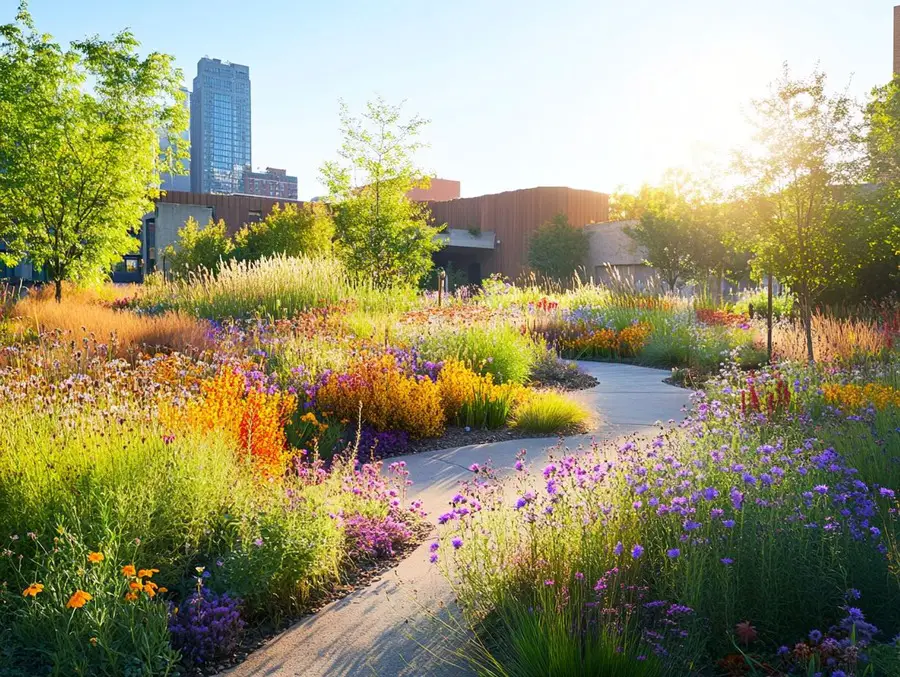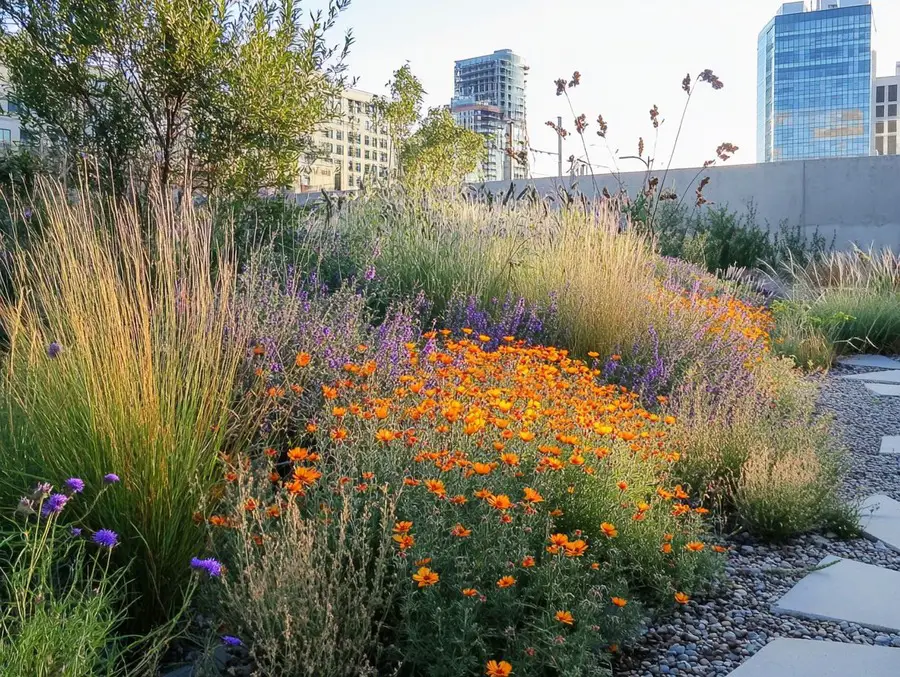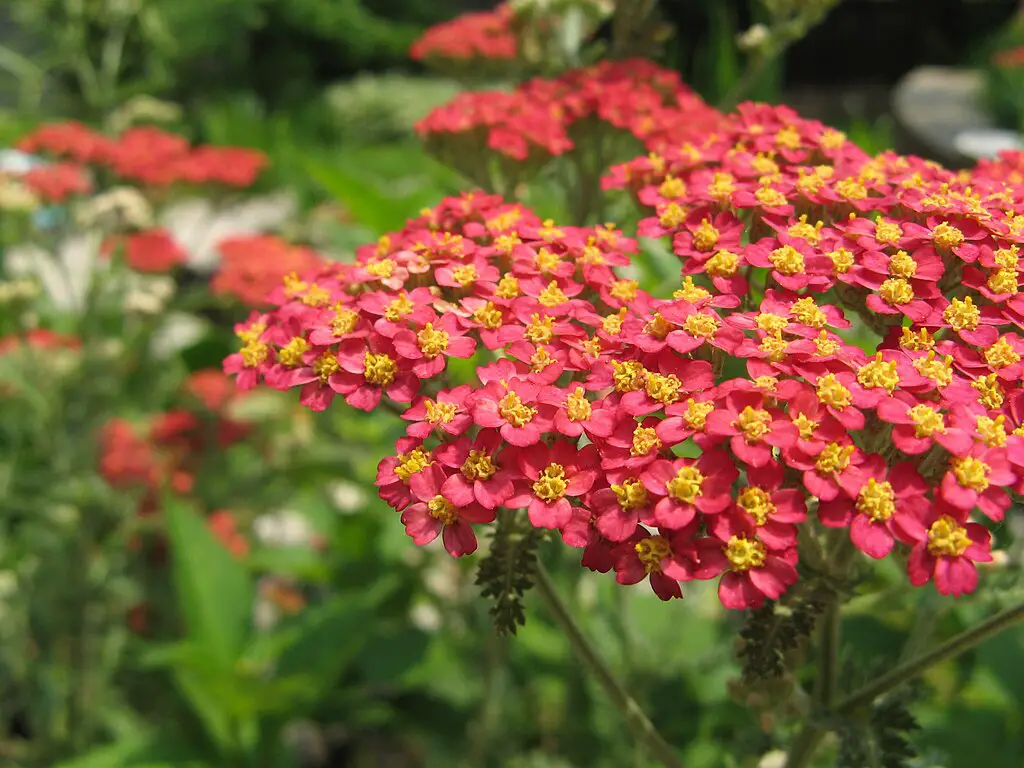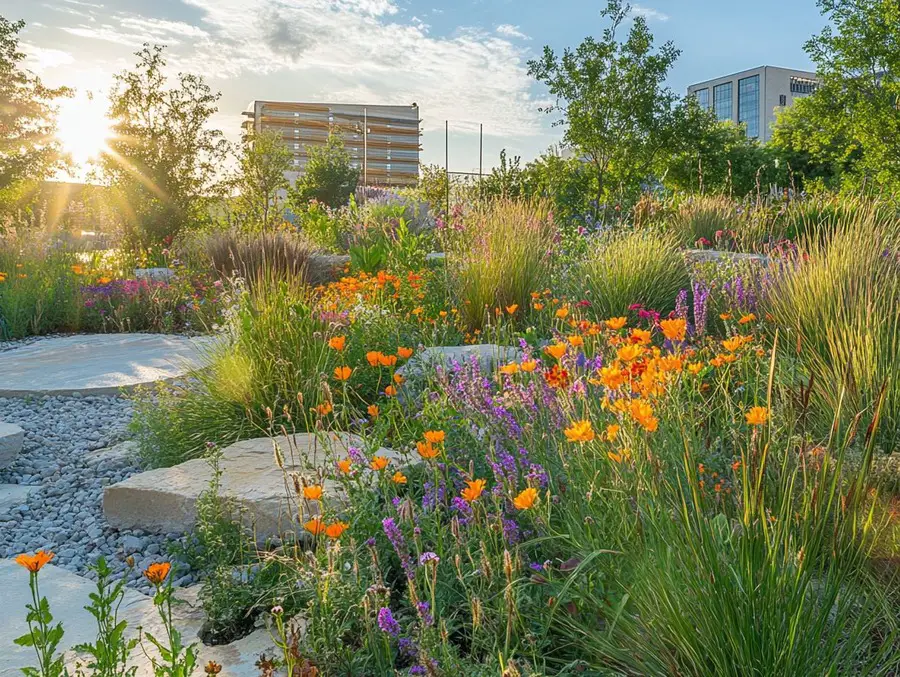
There’s a huge potential in xeriscaping for urban areas in a time when water conservation and sustainable landscaping are more important than ever.
And xeriscaping has popped up as a smart solution for urban living.
This article takes you through the concept of xeriscaping, exploring where it all started and breaking down its key principles.
You’ll discover the many benefits it brings, both environmentally and economically, and get some handy tips for designing and maintaining your own xeriscape garden.
You’ll learn how to pick the right drought-tolerant plants, tackle common challenges, and draw inspiration from successful urban xeriscaping examples that could transform your green space.
Get ready to embark on this journey toward a more sustainable and visually appealing landscape!
What is Xeriscaping for Urban Areas?

Xeriscaping is all about designing your landscape in a way that saves water and promotes sustainability, especially in urban areas where water can be a bit scarce.
This approach encourages you to use drought-resistant plants, native vegetation, and some clever gardening techniques to create outdoor spaces that are not just functional but also beautiful, even in dry conditions.
By embracing xeriscaping principles, you can help boost biodiversity, improve soil health, and make a positive impact on your local ecology while also supporting urban sustainability.
Definition and Origins
The term ‘xeriscaping’ comes from the Greek word ‘xeros,’ which means dry, and it pairs up nicely with ‘landscaping.’
It all started as part of a movement to promote water-efficient landscaping practices in places with limited water resources.
What is xeriscaping? A beginner’s guide to drought-tolerant landscaping – Colorado State University
This innovative approach popped up in response to the mounting challenges of water scarcity and environmental issues many areas faced during the late 20th century.
With urban populations booming and climate change becoming more pronounced, it quickly became clear that sustainable alternatives to traditional landscaping were necessary.
Looking back, you can see that ancient civilizations, like the Indigenous peoples of the Southwest United States, naturally practiced water conservation by using native plants and clever irrigation techniques.
By recognizing these cultural practices along with modern environmental considerations, xeriscaping really emphasizes the importance of choosing drought-resistant plants.
Not only do these plants thrive in dry conditions, but they also help shrink the ecological footprint of maintaining landscapes.
The Benefits of Xeriscaping in Urban Areas
Xeriscaping has a ton of benefits for urban areas that you’ll definitely want to consider.
It boosts water conservation, enhances biodiversity, and reduces environmental impact, all crucial in today’s climate-conscious world.
By using drought-tolerant plants and sustainable landscaping techniques, you can create green spaces that not only make your surroundings look great but also help tackle the urban heat island effect and manage stormwater like a pro.
In the end, embracing xeriscaping practices really contributes to urban sustainability and gets the community involved with better public spaces.
Environmental and Economic Advantages
Xeriscaping offers you some serious environmental and economic perks, especially if you live in urban areas grappling with water scarcity and ecological challenges.
By using drought-resistant plants and smart landscaping techniques, xeriscaping can really boost your air quality.
Those tough plants typically need less watering and help reduce pollutants in the air.
They create a diverse ecosystem, and they support local wildlife, which is fantastic for boosting biodiversity and keeping urban environments healthy.
On the economic side of things, you’ll find that xeriscaping can lower your water bills since you won’t need to irrigate as much.
Maintenance costs also drop thanks to the resilient nature of xeriscaped gardens.
In short, this approach helps you conserve valuable resources while turning your city landscape into a sustainable and thriving habitat.
Designing a Xeriscape Garden
Designing a xeriscape garden takes a bit of thought, but it’s all about making smart choices for your landscape.
You’ll want to focus on selecting the right plants, setting up efficient irrigation systems, and using materials like mulch to keep your soil in check.
The aim is to create a functional space that conserves water, boosts your outdoor aesthetics, and even supports local wildlife.
By incorporating native plants and drought-resistant species, you can create a sustainable garden that thrives with little upkeep while also helping out with ecological restoration.
Key Elements and Techniques of Xeriscaping

Key elements and techniques of xeriscaping include picking drought-tolerant plants, setting up efficient irrigation systems, and using mulch for soil management.
These strategies are essential for creating a sustainable landscape that conserves water while still looking great.
By choosing native or drought-resistant species, you can cut down on the need for excessive watering since these plants are already adapted to thrive in dry conditions.
When you incorporate advanced irrigation methods, like drip irrigation systems, you ensure that water gets delivered right to the plant roots, which boosts moisture efficiency
Mulching is a game changer, and it helps reduce evaporation and regulate soil temperature, keeping your plants safe from extreme weather.
All these components work together to create a smart approach to landscape design and promote responsible water use.
Choosing Appropriate Plants for Xeriscaping
Choosing the right plants for xeriscaping is super important. When you pick drought-tolerant and native species, you can really boost your garden’s resilience and make it look great, too.
By focusing on plant hardiness and biodiversity, you can create xeric gardens that not only thrive in urban settings but also require minimal irrigation.
This approach benefits both the local ecosystem and the overall health of your garden.
Adding ornamental grasses and low-maintenance ground cover can enhance your outdoor aesthetics while giving a little support to urban wildlife.
Drought-Tolerant and Native Species
When you’re picking plants for xeriscaping, it’s crucial to focus on drought-tolerant and native species to keep things sustainable and resilient.
These plants not only thrive in dry conditions but also bring a bunch of ecological perks, like attracting pollinators and boosting biodiversity.
Take native plants like lavender, agave, and yarrow, for example. They’re champs at handling long dry spells and need very little watering once they’re settled in.

Plus, their vibrant colors and unique textures can really amp up your landscape’s visual appeal while cutting down on water usage.
Make sure to select species that are well-suited to your local climate and soil conditions, as this will help them thrive.
Fortunately, regular maintenance is usually pretty easy, think minimal pruning and a bit of mulching now and then to keep the moisture in.
This way, you can enjoy a flourishing garden with hardly any effort!
Maintaining a Xeriscape Garden
Maintaining a xeriscape garden means you’ll need to follow some specific maintenance practices, like using the right watering techniques and timing your pruning just right to keep your plants healthy and vibrant.
By getting to know the unique needs of drought-resistant plants and using eco-friendly landscaping methods, you can enhance soil health and promote resource-efficient landscaping.
Plus, regular maintenance not only keeps your garden looking its best but also helps support the overall sustainability of your urban environment.
Proper Watering and Pruning Techniques
Proper watering and pruning techniques are crucial for keeping your xeriscape garden healthy and vibrant.
By using effective watering strategies that focus on minimizing water use, you can create a sustainable ecosystem while making sure your plants get the hydration they need.
Think about methods like drip irrigation, which delivers water straight to the roots, or using rain barrels to collect that precious rainwater.
Prudent pruning serves a double purpose; it not only makes your xeriscape look great but also supports plant health by getting rid of dead or diseased branches.
When you prune wisely, you improve air circulation and sunlight exposure for your plants, which leads to a more robust and visually appealing garden.
Overcoming Challenges with Xeriscaping

Overcoming challenges with xeriscaping can be a rewarding adventure for you, letting you implement solutions that benefit both your garden and the surrounding urban ecology.
You might encounter common obstacles like urban runoff, soil erosion, and the need to support urban wildlife, but with the right ecological design principles and strategies, you can tackle these issues head-on.
By taking a proactive approach to maintaining your xeriscape garden, you’ll not only boost its resilience but also play a part in broader environmental stewardship.
Common Obstacles and Solutions
You might run into some common obstacles with xeriscaping, like poor soil conditions, limited water availability, and the challenges of urban runoff.
But don’t worry because there are effective solutions to tackle these issues.
- First off, you can enhance your soil quality by mixing in some organic matter, like compost. This not only improves the soil structure but also helps it retain moisture better.
- In terms of limited water availability, consider using rainwater harvesting techniques. This can really cut down on your dependence on municipal water supplies, making your irrigation practices much more sustainable.
- Also, think about using permeable paving materials to manage urban runoff. This helps recharge groundwater and reduces erosion.
By implementing these strategies, anyone diving into xeriscaping can create a flourishing landscape that conserves water and minimizes their environmental impact.
Examples of Successful Xeriscaping in Urban Areas
When you look at examples of successful xeriscaping in urban areas, you can really see how effective sustainable landscaping practices can be.
These projects not only showcase eco-friendly design but also inspire you and your community to get involved in environmental stewardship.
Case Studies and Real-Life Examples
Case studies of successful xeriscaping projects in urban settings show just how effective design principles can really make a difference in the community.
Landscape Transformation Case Studies EPA
By using thoughtful landscaping strategies that focus on water conservation, selecting native plants, and adopting sustainable maintenance practices, these projects become shining examples of environmentally-friendly urban development.
Take, for instance, a revitalization project in a drought-prone city where existing green spaces were transformed into vibrant xeriscaped gardens.
The design featured terraced planting beds that not only made the area more beautiful but also helped minimize runoff.
Sure, there were challenges, like some initial pushback from community members and the need for educational outreach.
But those hurdles were tackled through collaborative workshops that showcased the benefits of responsible water use.
In the end, these xeriscaping efforts didn’t just cut down on water usage; they also boosted local biodiversity and created a sense of pride and ownership among community members.
The Potential In Xeriscaping For Urban Areas FAQs
What is xeriscaping in urban areas and why is it important?
Xeriscaping is a type of landscaping that focuses on using plants and techniques that require minimal water.
In urban areas, where water resources are limited, xeriscaping helps conserve water and reduce maintenance costs.
Can xeriscaping be aesthetically pleasing in an urban setting?
Yes, xeriscaping can be visually appealing in urban areas. By using native plants and creative design techniques, xeriscaped landscapes can be just as beautiful as traditional landscapes.
What are some benefits of xeriscaping in urban areas?
Xeriscaping not only conserves water, but it also reduces the need for chemical fertilizers and pesticides. It also attracts native wildlife and can help reduce urban heat island effect.
Is xeriscaping only suitable for dry climates?
No, xeriscaping can be implemented in any climate. It is all about choosing the right plants and design elements that are appropriate for the specific location.
Do I need to completely remove my lawn to xeriscape in an urban area?
Not necessarily. You can incorporate xeriscaping techniques and plants into your existing lawn to gradually transition to a more water-efficient landscape.
Are there any financial incentives for xeriscaping in urban areas?
Some cities offer rebates or tax breaks for implementing xeriscaping in urban areas. Check with your local government for any available incentives.
An Introduction to Xeriscaping: Water-Saving Garden Ideas
Benefits of Xeriscaping: Save Water, Time, and Money
What is xeriscaping? A beginner’s guide to drought-tolerant landscaping
